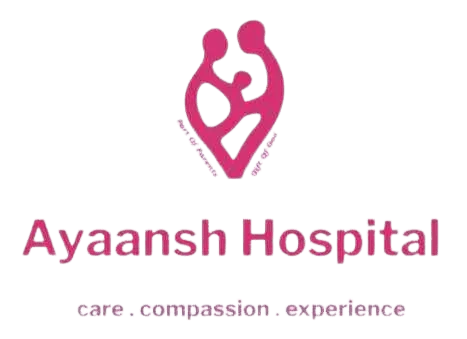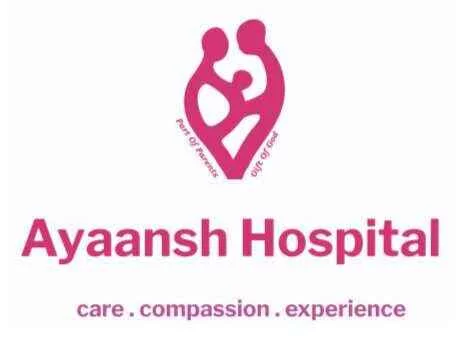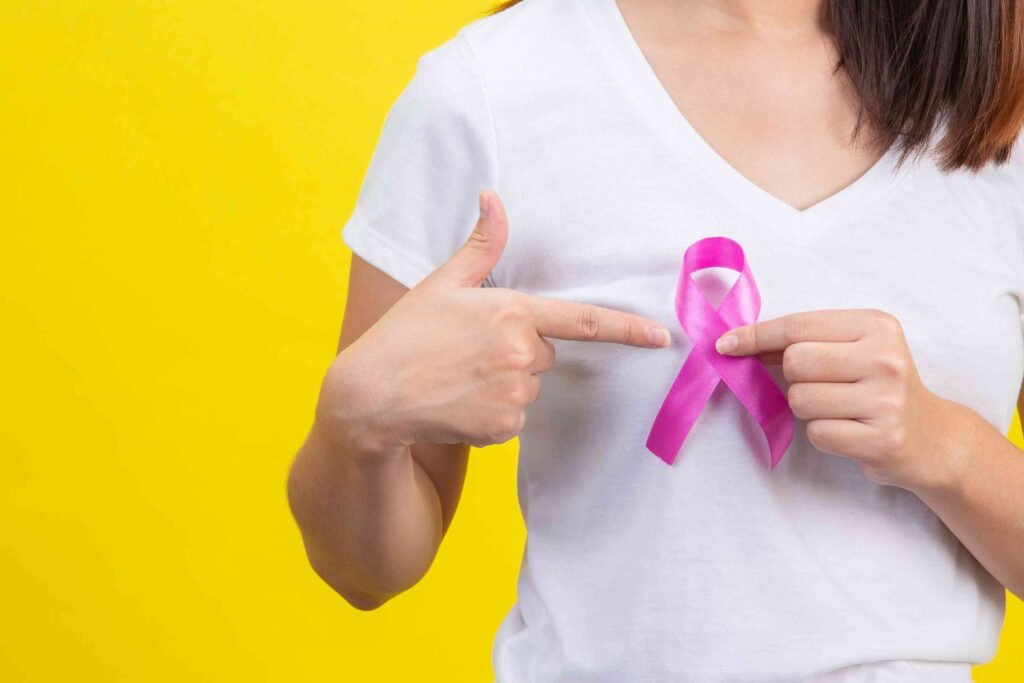Understanding Breast Cancer: Types, Stages, and Treatments
Breast cancer is something that touches the lives of so many people, directly or indirectly. Whether you’re personally dealing with it, supporting someone who is, or simply looking to understand it better, having a grasp on the basics can make a world of difference. In this blog, we’re going to explore what breast cancer is, dive into the various types and stages, and go over the treatments available today. Let’s break it down so that you can get a better picture of what breast cancer is all about and how it’s treated.
What is Breast Cancer?
At its core, breast cancer is a disease where cells in the breast grow out of control. These cells usually form a tumor, which can often be felt as a lump or seen on an X-ray. Breast cancer can start in different parts of the breast, and it affects both women and men (although it’s much more common in women). If not treated, breast cancer can spread to other parts of the body, which makes it life-threatening. But thanks to advances in treatment and early detection, survival rates have improved significantly over the years.
Types of Breast Cancer
There are several types of breast cancer, and each type behaves differently. Understanding the type of breast cancer is key because it impacts the treatment plan and prognosis. Here’s a look at the most common types:
1. Ductal Carcinoma In Situ (DCIS)
This type of breast cancer is considered non-invasive. “Ductal” refers to the milk ducts, and “carcinoma” is a term for cancer that starts in the skin or the lining of organs. In DCIS, the abnormal cells are found inside the ducts of the breast, but they haven’t spread to the surrounding tissue. Although DCIS is not life-threatening, it can increase the risk of developing invasive breast cancer later on if left untreated.
2. Invasive Ductal Carcinoma (IDC)
This is the most common type of breast cancer, making up about 80% of all cases. “Invasive” means that the cancer has spread beyond the ducts into the surrounding breast tissue. IDC can spread to other parts of the body through the lymphatic system and bloodstream, making it more serious than DCIS.
3. Invasive Lobular Carcinoma (ILC)
This type of breast cancer starts in the lobules, which are the glands that produce breast milk. Like IDC, invasive lobular carcinoma can spread to other parts of the body. ILC can be harder to detect on mammograms than other types of breast cancer because it often causes a thickening rather than a distinct lump.
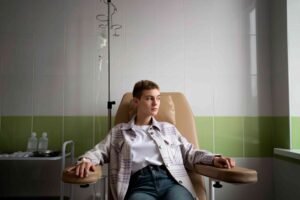
4. Triple-Negative Breast Cancer (TNBC)
Triple-negative breast cancer is a less common but more aggressive form of breast cancer. It’s called “triple-negative” because it tests negative for estrogen receptors, progesterone receptors, and HER2. This means that hormonal therapies that target these receptors are not effective, making treatment more challenging. TNBC tends to grow and spread more quickly than other types.
5. HER2-Positive Breast Cancer
HER2-positive breast cancer is a type that has a higher level of a protein called HER2, which promotes the growth of cancer cells. This type can be more aggressive, but targeted therapies that specifically block HER2 are available and can be very effective.
6. Inflammatory Breast Cancer (IBC)
Inflammatory breast cancer is rare, but it’s also very aggressive. Instead of forming a lump, IBC causes the skin of the breast to become red, swollen, and warm. The breast may appear to be inflamed, hence the name. Due to its aggressiveness, IBC is typically at an advanced stage when diagnosed, and it requires swift treatment.
7. Paget’s Disease of the Nipple
This rare type of breast cancer affects the skin of the nipple and the surrounding area (the areola). It often starts with crusty, scaly skin, itching, and sometimes discharge or bleeding from the nipple. Paget’s Disease of the Nipple is often linked with DCIS or invasive breast cancer.
Stages of Breast Cancer
The stage of breast cancer describes how advanced it is. This is a crucial part of the diagnosis because it helps guide the treatment plan and gives insight into the prognosis. Breast cancer stages range from 0 to IV (4), with several subcategories in between.
Stage 0 – Non-Invasive (In Situ)
Stage 0 breast cancer is non-invasive, meaning it hasn’t spread beyond its original site. DCIS is an example of stage 0. At this stage, cancer cells are confined within the ducts or lobules and haven’t spread to surrounding breast tissue. While stage 0 is not life-threatening, it should be treated to prevent progression.
Stage I – Early Stage Invasive
In stage I breast cancer, the tumor is small (usually less than 2 cm) and hasn’t spread to the lymph nodes, or it has only spread to a few small clusters of cells in the lymph nodes. Treatment at this stage is generally very effective, and the prognosis is quite good.
Stage II – Localized Spread
Stage II breast cancer is when the tumor is larger than 2 cm or has spread to nearby lymph nodes. This Stage is further divided into two categories, IIA and IIB, depending on the size of the tumor and the extent of lymph node involvement. Treatment is still highly effective, but it may be more intensive than for stage I.

Stage III – Regional Spread
Stage III breast cancer, also known as locally advanced breast cancer, means the cancer has spread to multiple lymph nodes and possibly the chest wall or skin but not to distant organs. It is divided into IIIA, IIIB, and IIIC, depending on the size and extent of the spread. Treatment usually involves a combination of therapies, including surgery, chemotherapy, and radiation.

Stage IV – Metastatic Breast Cancer
Stage IV, or metastatic breast cancer, is when the cancer has spread to other parts of the body, such as the bones, liver, lungs, or brain. This stage is considered advanced and is not curable, but treatment can help manage symptoms and improve quality of life. Even at this stage, there are treatments available to help extend life and relieve symptoms.
Treatment Options for Breast Cancer
The type and stage of breast cancer will heavily influence the treatment plan. Typically, treatment may involve surgery, radiation therapy, chemotherapy, hormone therapy, targeted therapy, or a combination of these. Here’s a closer look at each:
Surgery
Surgery is often the first line of treatment, especially for early-stage breast cancer. There are different types of surgeries, including:
– Lumpectomy: This surgery removes only the tumor and a small margin of surrounding tissue. It’s often referred to as breast-conserving surgery because it leaves most of the breast intact.
– Mastectomy: A mastectomy removes all of the breast tissue. In some cases, both breasts may be removed, especially if the patient has a high risk of cancer in the other breast as well.
– Lymph Node Removal: If cancer has spread to the lymph nodes, some or all of them may be removed. This can help prevent further spread of the disease.
Radiation Therapy
Radiation therapy uses high-energy rays to target and destroy cancer cells. It’s often used after surgery to kill any remaining cancer cells in the breast, chest wall, or lymph nodes. Radiation therapy can help reduce the risk of recurrence, especially in patients who have had a lumpectomy.
Chemotherapy
Chemotherapy uses drugs to kill cancer cells throughout the body. It’s often used when there’s a risk that cancer cells may have spread beyond the breast and nearby lymph nodes. Chemotherapy can be given before surgery (neoadjuvant therapy) to shrink the tumor or after surgery (adjuvant therapy) to lower the risk of recurrence.

Hormone Therapy
If the breast cancer is hormone receptor-positive, hormone therapy can be an effective treatment. This type of therapy either lowers the body’s estrogen levels or blocks estrogen receptors on cancer cells. Common hormone therapies include Tamoxifen and aromatase inhibitors.
Targeted Therapy
Targeted therapies are drugs that specifically target certain proteins or genes that help cancer cells grow. For example, HER2-positive breast cancers can be treated with drugs like Trastuzumab (Herceptin), which targets the HER2 protein. Targeted therapies tend to have fewer side effects than chemotherapy because they’re more selective in their action.
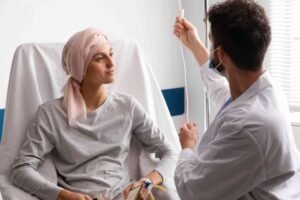
Immunotherapy
Immunotherapy is a newer form of treatment that helps the immune system recognize and attack cancer cells. While it’s not widely used for all types of breast cancer, it can be effective for certain types, such as triple-negative breast cancer, particularly in advanced stages.
Living with and Beyond Breast Cancer
Dealing with breast cancer is not just about the physical treatments. It’s also an emotional journey that can affect many aspects of your life. Support from family, friends, and support groups can make a big difference. There are many resources available, including counseling, support groups, and wellness programs, to help with the emotional and psychological aspects of breast cancer.
If you or someone you know is dealing with breast cancer, remember that you’re not alone. There are many resources and communities out there dedicated to helping people through this journey. Even after treatment, follow-up care and ongoing check-ups are crucial to monitor for any signs of recurrence and to manage any long-term side effects of treatment.

Final Thoughts
Breast cancer is a complex disease, but we’ve come a long way in understanding and treating it. With early detection, personalized treatments, and ongoing research, the prognosis for breast cancer continues to improve. The most important thing is to stay informed, be proactive about regular screenings, and seek support when you need it.
